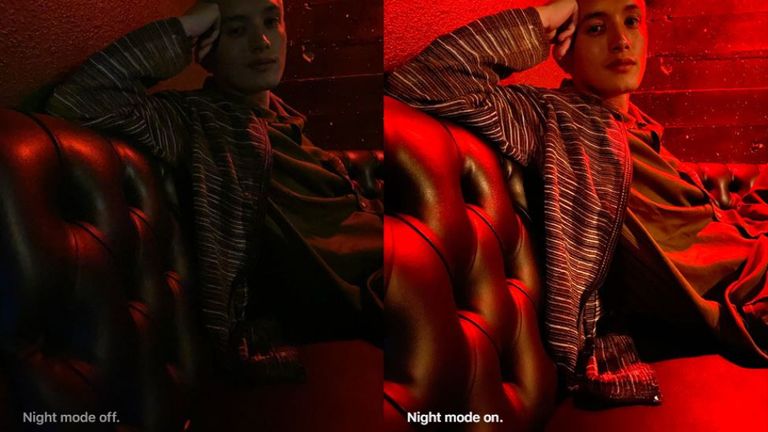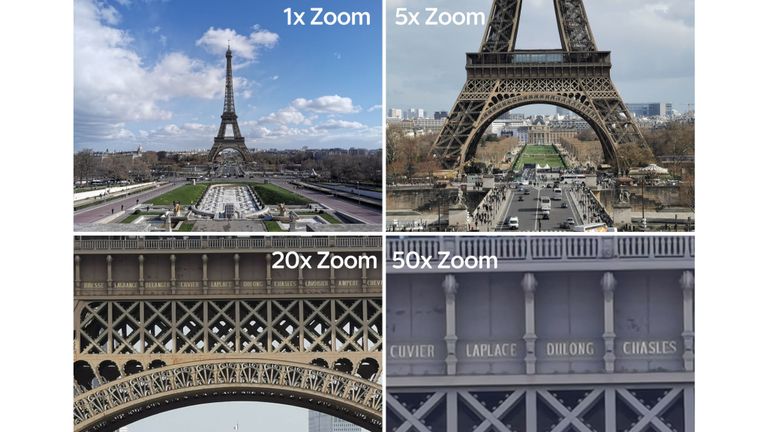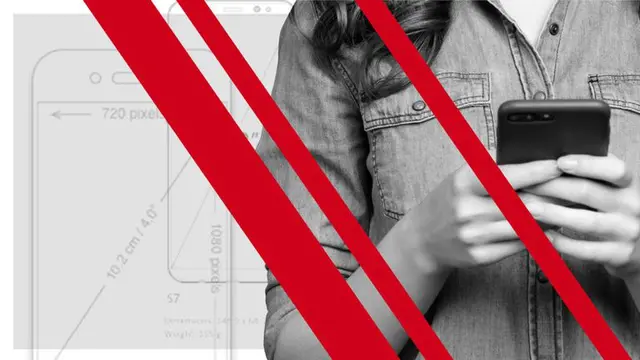Buying a phone these days can easily set you back £1,000. So what makes the major models on the market worth that kind of cash?
The three best-selling phone makers in the UK are
Apple
, **Samsung
**and **Huawei
** . Apple has the lion's share of the market, with 50% of sales over the last year according to Stat Counter.
Samsung has 28% of the market, but Huawei - which alongside other Chinese competitors is
eating into Apple and Samsung sales
on a global basis - is a solid third, with 9.7% of consumers deciding to buy the Chinese company's phones.
Here is a deep dive into how these firms' flagship devices compare against each other, and below that a dive into what unique features they're each offering to win over consumers:
The standard iPhone 11 comes with a dual-camera system that can shoot 4K video, and includes an ultra wide camera which allows users to zoom out for sweeping 120-degree landscape photographs.
The company could be facing
regulatory action in the EU over its lightning cable
however, which isn't inter-operable with other major phone brands.
Both of the Pro models use a triple-camera system which brings in a Telephoto lens which offers a 2x optical zoom - meaning unlike the 6x digital zooming feature, you can get twice as close to the action without undermining the image quality.
Apple debuted its Ultra Wide camera lens on the iPhone 11, letting users capture four times more scene than they could on its normal wide angle lens.

Image:The iPhone 11 has an Ultra Wide camera for sweeping landscape shots. Pic: Apple
Shooting in low light situations is frustrating for all smartphone photographers, and Apple's night mode on the iPhone 11 allows users to avoid turning on flash which can distort colours in order to get a brighter picture.

Image:The iPhone 11 comes with a night mode feature. Pic: Apple
The iPhone 11 also uses the next generation of its "Smart HDR" technology which uses artificial intelligence to blur the background of a shot when it features a face, and apply highlights and shadows to skin tones to reproduce the look of images taken with professional photography equipment.

Image:The iPhone 11 has a Smart HDR feature which artificially blurs the background. Pic: Apple
Apple's phones remain the most expensive on the market, and for a long time that was justified by how exceptionally advanced they were in terms of technology and the relative security of iOS compared to Android systems, however the company has been outpaced in recent years as its rivals exceed it - particularly on camera technology.
Released on 20 September 2019
iPhone 11, from £729
iPhone 11 Pro, from £1,049
iPhone 11 Pro Max, from £1,149
As a company Huawei has faced sanctions from the White House, ostensibly on security grounds although these were
subsequently eased
following **positive trade deal talks
** with China, calling into question the initial security grounds for the ban.
Huawei operates a dual-flagship policy, launching its P-series phones in March for a photography-focused consumer base, and its Mate-series phones in October for consumers who enjoy having the latest technological innovations.
The P-series of phones focuses on creativity, aiming for smartphone users who are active on image-heavy social media platforms such as Instagram. The P30 Pro is one of the best on the market for capturing stills, but reviewers considered it merely excellent for video recording.
The zoom on the phone offers very high image quality, especially when photographing small objects such as insects - a popular pastime in East Asia.

Image:A detailed photograph Pic: Liu Sangen/Huawei
Instead of the regular Red Green Blue (RGB) sensor used in most smartphone camera, the Huawei P30 Pro arrived with a Red Yellow Blue (RYB) sensor, allowing the phone a night mode feature which far outperformed that of its rivals.

Image:The Huawei P30 Pro's RYB sensor allowed it to take excellent nighttime shots. Pic: Huawei
The camera set-up in the P30 Pro was by far the best in the market when it was released, featuring a 5x optical zoom using its periscope technology inside the hardware of the phone itself, and a 50x zoom in aggregate when combined with digital zooming techniques.

Image:The Huawei P30 Pro comes with a 50x zoom feature. Pic: Nick Meek/Huawei
Released on 26 March 2019
P30, from £429
P30 Pro, from £799
P30 Lite, from £183
The triple camera set-up on the phone's rear - rising to a quadruple camera set-up with the S20+ and S20 Ultra - offers users fairly high quality video recording, up to 8K in quality, while in-camera apps and features will also contribute to making it easier for users to produce new content.
Imagery is what the Galaxy S20 range is really focused on, with a larger sensor than on any of Samsung's previous phones alongside the company's nona-binning technology (presumably "nona" meaning nine, and "binning" referring to the pixel merging technique) combining nine pixels into one at the sensor level.

Image:An image taken by the Single Take feature on the Galaxy S20. Pic: Samsung
The features and apps are where the S20 range is really targeting its market. In particular, Single Take offers users access to the Galaxy S20's AI in order to curate moments captured in video - similar to GoPro's QuikStories feature.
Single Take uses all of the cameras on the rear of the device and simply records the user's actions for up to 10 seconds, before presenting the device user with a selection of content.
The S20 Ultra is particularly kitted out for video recording, with an even more powerful wide-angle lens capable of capturing 108MP images with an F1.8 aperture. Whether this professional-grade filming capability will see the phone used for professional filming is something to watch out for.
Released on 6 March 2020
Galaxy S20, price unavailable
Galaxy S20+, price unavailable
Galaxy S20 Ultra, price unavailable
 简体中文
简体中文

